GAME: The Eternal Castle (Remastered)
RELEASED: 01/05/2019
DEVELOPER: Leonard Menchiari, Daniele Vicinanzo, Giulio Perrone
PUBLISHER: Playsaurus
AVAILABLE ON: PC (Steam)
In the indie game scene, a lot of games take inspiration from the games of the past. Typically this comes in the form of tributes to oldschool consoles like the NES, SNES and Mega Drive. But it’s not often you see games that pay homage to the graphics of old IBM PC’s. The Eternal Castle, a supposed remake of a lost 1987 PC game, is such a game. And much in the vein of the game MURI, it acts as a tribute to old school PC games from the late 80’s and early 90’s. In this review we’ll be taking a look at this game and also discuss its legitimacy as a remaster. So strap in, it’s time to explore the CGA glory of The Eternal Castle.
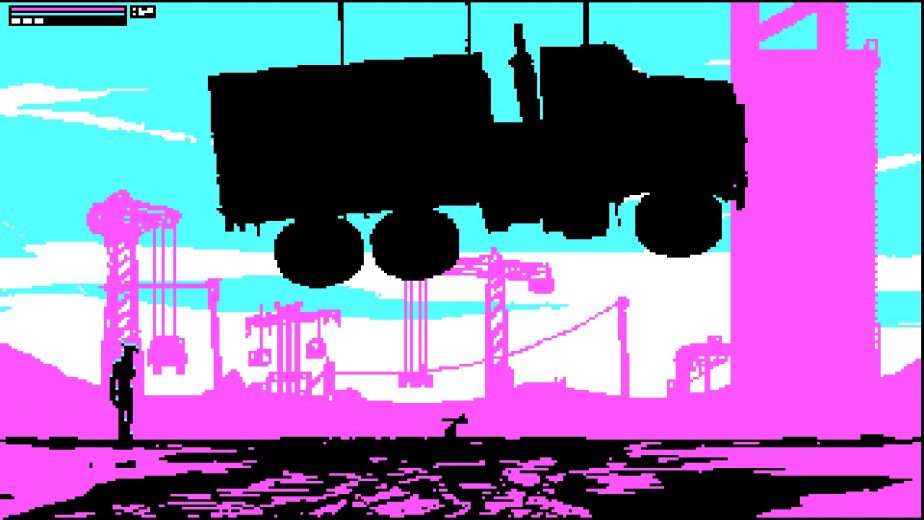 |
| A lot of levels present traps that need to be avoided. Often you’ll end up learning it the hard way. |
The gliders have ended up in 4 separate locations, all of which serve as levels to explore before the final showdown. Granted while the game only has five levels including the final one, the levels are generally quite large and require a lot of exploration, and not to mention trial and error, before you can get through them. The first location is the one you explore after your ship has crashed. It consists largely of industrial landscapes and serve as a tutorial level to get you familiar with the game’s controls and mechanics. After completing it you have 3 choices of where to go next. The main goal is to gather Gliders for your ship as well as fragments that have scattered across the region.
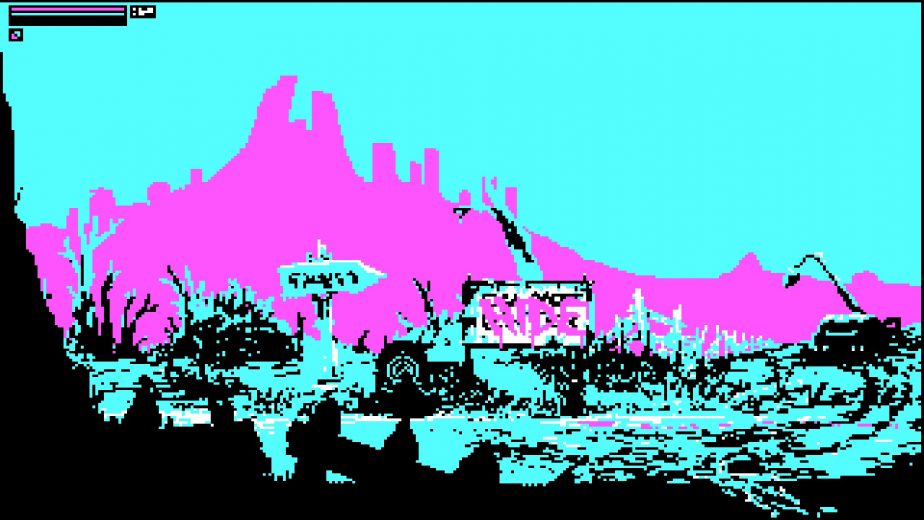 |
| On your first playthrough, these tablets serve as checkpoints and also refill your health. |
As you explore the levels you’ll not only come across fragments to collect, but also items that give you permanent upgrades. These include a stealth upgrade that allows you to become invisible when crouching, increased health, armor and so forth. While you don’t require all of these items to reach the final level, they do generally help make the adventure less painful. You can carry a maximum of two weapons at any given time. The game takes a bit of a modern approach to weapons though as once they run out of ammo you have to find a replacement, so you’ll be switching out your weapons constantly.
Enemies will always drop their weapon if they are carrying one, which helps give you options. Choosing which weapons to hold on to becomes a tactical choice since they can help you in the levels where they are sparse or non-existent, as each level offers very different gameplay experiences.
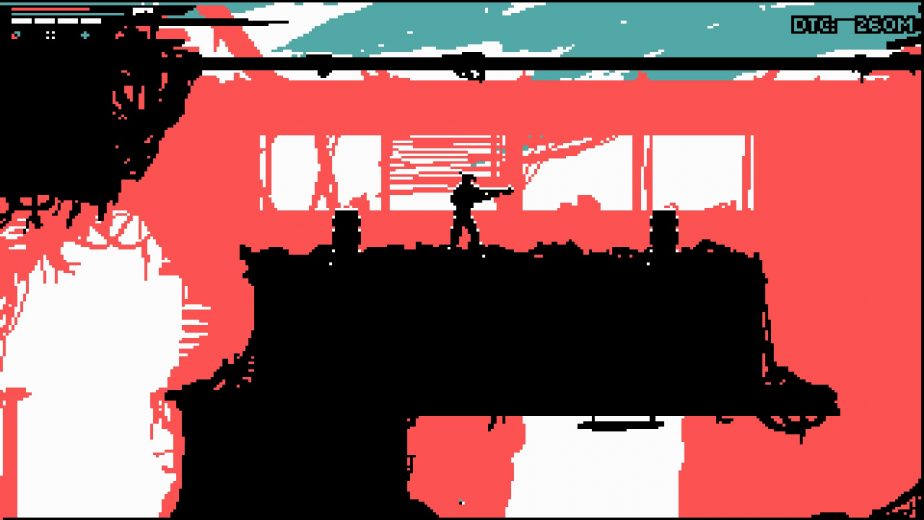 |
| The game will offer very different experiences in each level, and also switch between different CGA palettes frequently. |
Now to move on to the game’s alleged roots as a 1987 game and it’s so called “remaster” label. It’s all pretty much fake. There is simply no way this game is originally from 1987, nor is there any way it is a remaster. Prince of Persia, the game often touted as the game to popularize this genre didn’t come out until 1989. And games like Another World and Flashback which this game feels extremely derivative of, didn’t come out until 1991 and 1992 respectively. And the game’s startup sequence not only copies lines of text from DOOM, which came out in 1993, it also includes lines of Linux text which would never belong on a DOS system.
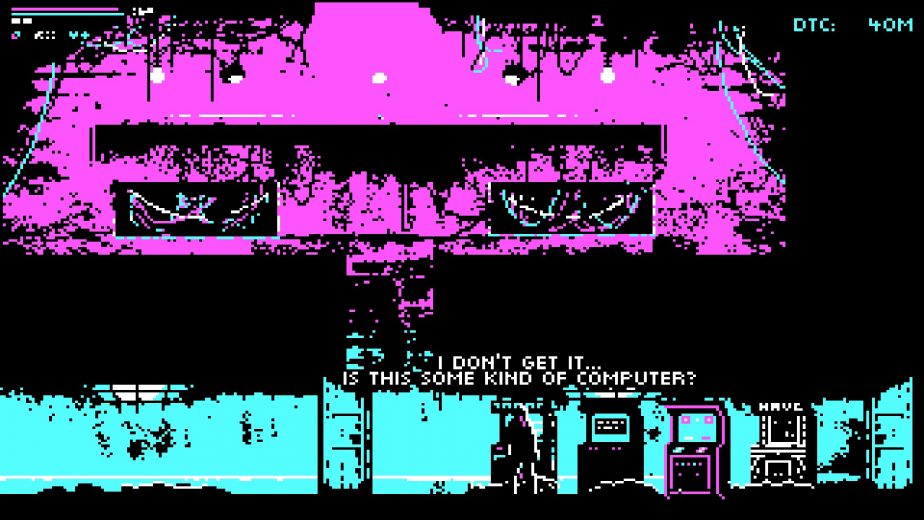 |
| Your character will often react to or interact with the environment, often quipping on things like arcade machines. |
In 1987, several video modes were available in fact. 16 colour EGA was most common during this time for PC games, a standard which launched in 1984 already. Heck, VGA which supported 256 colours LAUNCHED IN 1987! And not to mention you had the Tandy standard which also supported 16 colours. Most games of the late 80’s supported multiple modes, and granted CGA was among them. But the way this game utilizes CGA is unlike any of the games from the 80’s. CGA was often utilized with composite monitors in mind where the colours would blend together and create more colours than the 4 colours the CGA cards were capable of. But The Eternal Castle uses CGA more to simulate shapes and lighting in a far more modernized way that simply no games of the era did. The only reason this game would use CGA is for artistic purposes.
And it does not always use its graphics well either. A lot of text is near impossible to read, almost like it’s been poorly scaled down, which I myself have had issues with being a game developer, but if the game was a legitimate product it would not have this issue. They could’ve gone with EGA or VGA and still gotten away with “it’s a 1987” game but for its gameplay style, even that would be a stretch and going for a lost 1991 game would be far more applicable.
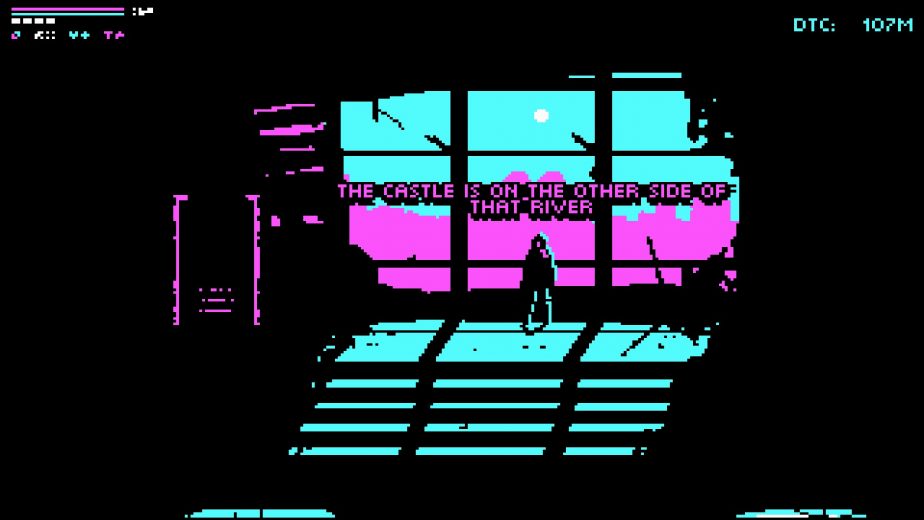 |
| The game uses CGA to create really intense contrast, often to great effect in scenes. |
The game’s use of bitcrushed sound effects makes it painfully obvious the game has no roots in the 80’s. And it features no option to listen to original PC speaker sound effects. The sound effects aren’t bad but they definitely don’t feel like actual PC sound effects from the era. At least the soundtrack is excellent, featuring everything from ambient noise to driving synthwave beats. While it does not at all feel like an actual product from the 80’s, it does feel like a tribute to them, much like the entire retrowave culture does.
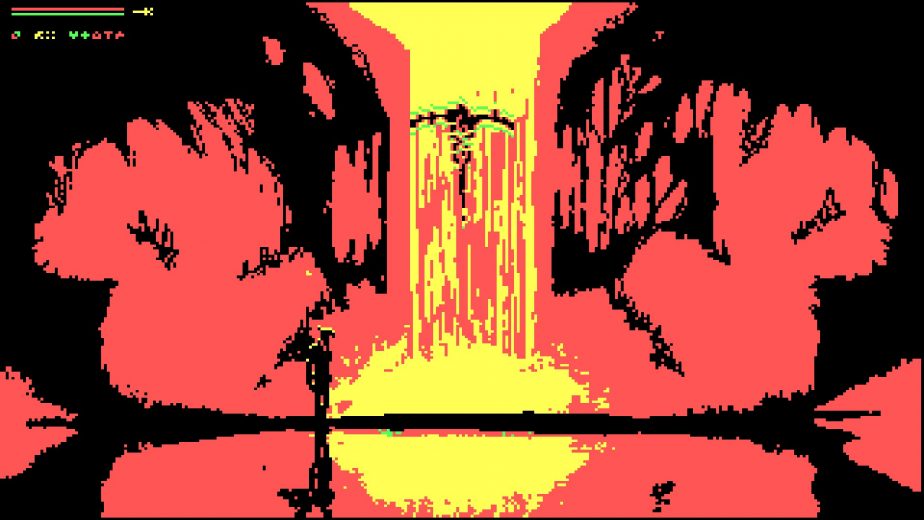 |
| The final boss battle is probably the game’s high point and feels like a well earned climax. |
The CGA style is more used as a filter, and in that regard gives the game a unique style where there is a lot of detail but it’s all hinted at and you’re never quite sure what you’re looking at. It gives the game an eerie alien atmosphere that very much fits its post-apocalyptic feel. At times it feels like you’re exploring an entirely different planet, where things feel familiar yet look completely different. It’s weird how the game completely captures the feeling of playing oldschool PC games without succeeding at itself feeling like one. And you’re not likely to have ever played anything quite like it.
Much like a lot of modern retro games, it’s simply a big tribute to our childhoods. To growing up with games that brought us into another world of archaic graphics and mastery through repetition. It’s definitely worth a grab if anything for capturing some of that essence.
SCORE
STORY: 7/10
GAMEPLAY: 8/10
GRAPHICS: 8/10
SOUND: 7/10
FINAL SCORE: 8/10


No comments:
Post a Comment